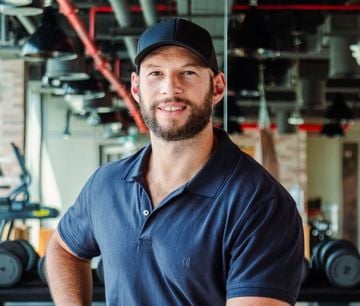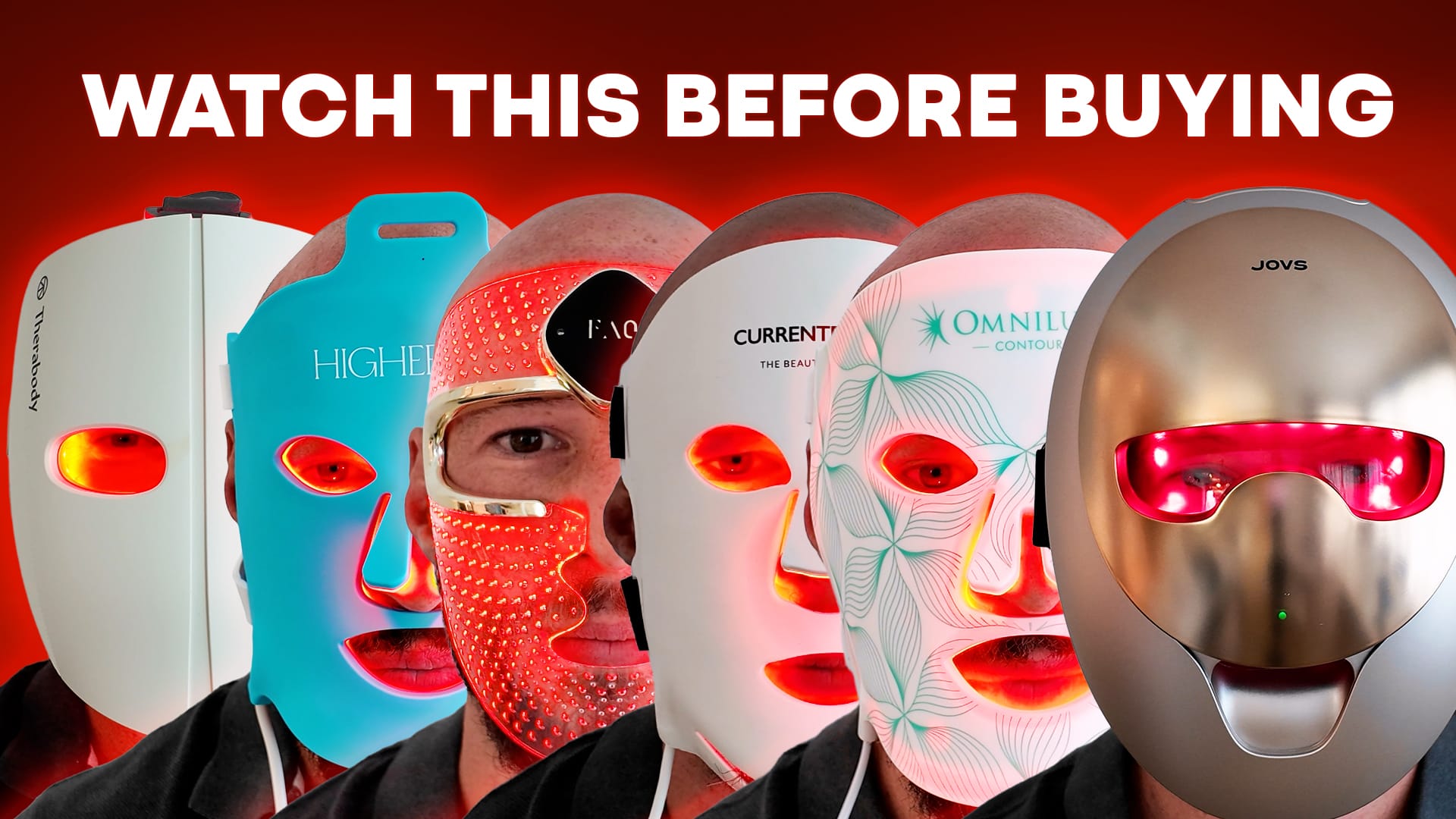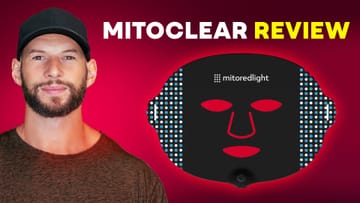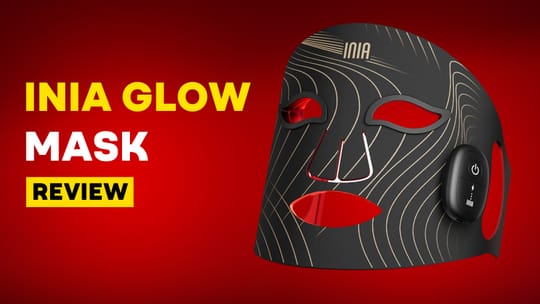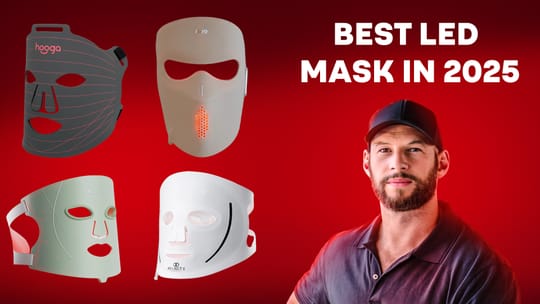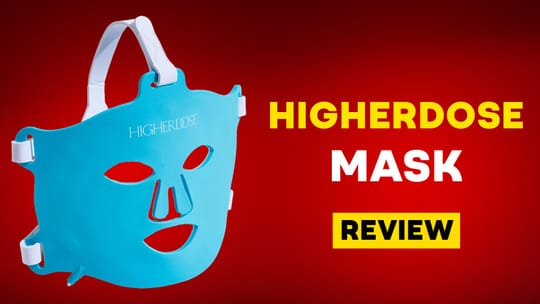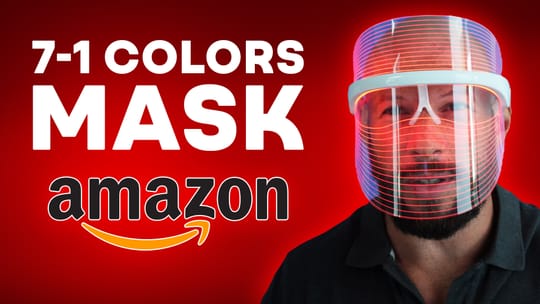If you’ve ever been tempted by red light therapy masks that claim to be based on NASA science or promise to “erase wrinkles” with rainbow-colored LEDs, you’re not alone.
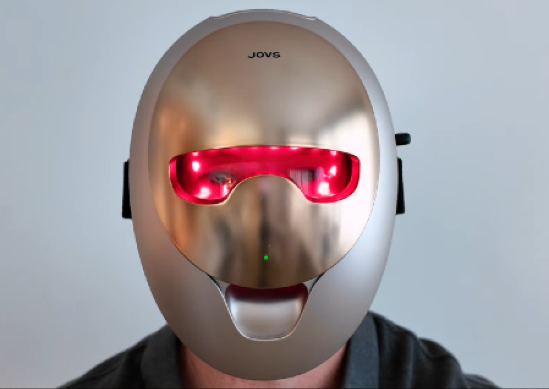
The market is crowded with flashy devices making bold claims. But here’s the truth—most of those features are marketing fluff. Based on years of hands-on testing, real-world experience, and clinical research, only a few core elements truly matter.
In this article, I’ll guide you through what to look for in a red light therapy mask to ensure it works effectively.
This isn’t a theory-based review or regurgitated product spec sheet—it’s built on data I’ve gathered from comparing over 20 masks, using professional light testing tools, and wearing the devices myself. These are the same four key categories I use in my reviews: light output, coverage, fit and comfort, and price with peace of mind.
1: Light Output—The Right Wavelengths & Power Matter Most
Let’s start with the most important feature—the actual light emitted from the mask. If a mask doesn’t emit the right wavelengths at the proper power levels, the rest doesn’t matter.
The Two Wavelengths That Work
When it comes to skin health and beauty, only two wavelengths are proven effective:
Red light at this range penetrates a few millimeters into the skin. That’s the sweet spot for stimulating fibroblasts—cells that generate collagen and elastin. Numerous studies confirm that red light enhances ATP production (cellular energy), reduces inflammation, and promotes skin firmness.
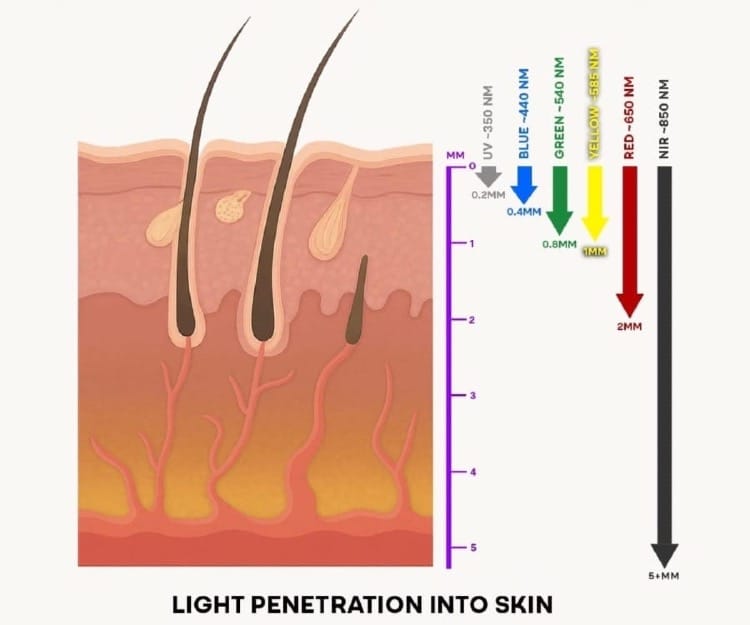
Near-infrared light goes even deeper—about 5 to 10mm into the lower dermis. It works similarly to red light but offers additional benefits, including increased blood circulation and tissue repair. Used together, red and NIR light create a powerful surface-to-depth combination that drives real results.
If a mask doesn’t have both red and NIR light, skip it. You’re simply not getting the full therapeutic effect.
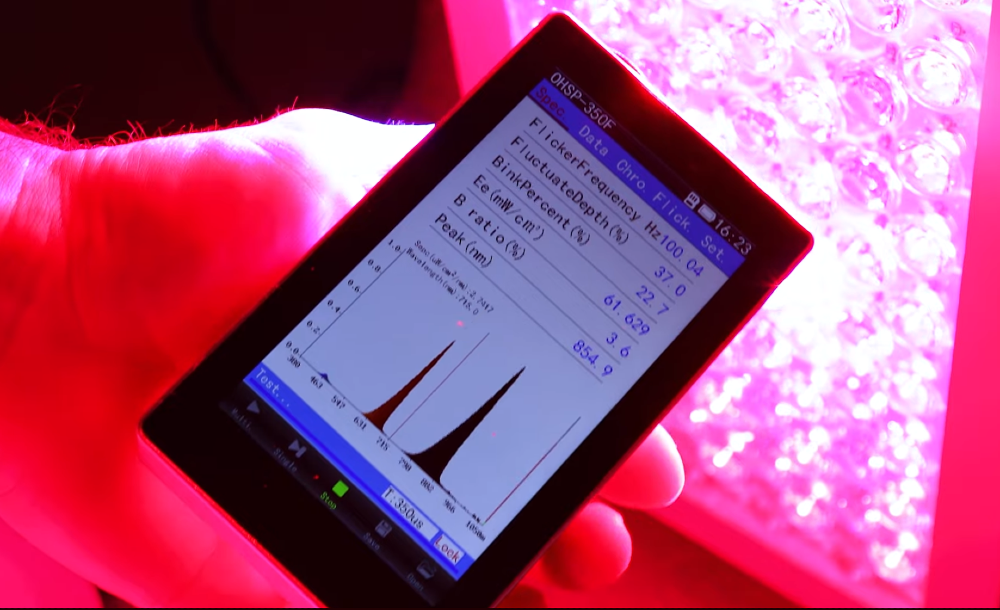
What About All the Other Colors?
You’ve probably seen masks boasting “seven light colors,” such as green, blue, pink, and amber. These might sound impressive, but here’s the reality:
- Blue Light (400–470 nm): Great for acne because it kills acne-causing bacteria. Not beneficial for wrinkles or anti-aging. It can be helpful, but only if you can switch it off when not needed, especially since overuse in darker skin tones may lead to hyperpigmentation.
- Green Light (520–540 nm): A “maybe” wavelength. Some evidence suggests that it may help with circulation and wound healing or reduce cellulite. But the research isn’t conclusive. It’s a nice-to-have, not essential.
- Amber Light (585–600 nm): Penetrates slightly less than red light. It may help calm inflamed skin or reduce redness. Again, useful, but not critical.
- Pink & Purple Light: These are not actual wavelengths. They're a mix of red and blue LEDs. Your eyes see pink or purple, but your skin is just getting red and blue light. If a company promotes these as separate therapeutic lights, that’s a red flag.
So, in summary, red and NIR are must-haves. Blue is a helpful extra. Everything else? Nice, but not necessary.
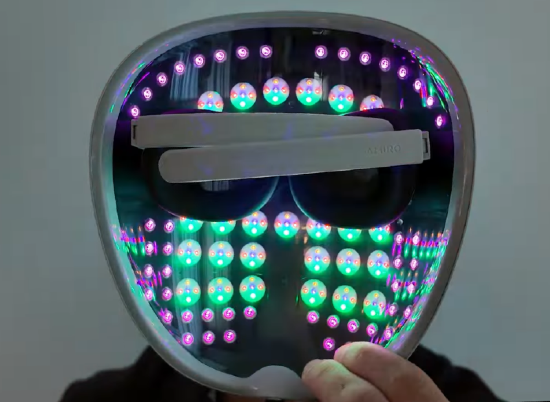
Power Output—Getting the Dose Just Right
Even if you’ve got the right wavelengths, it won’t matter if your mask is underpowered—or worse, overpowered.
After conducting extensive research and testing numerous devices myself, I’ve found the therapeutic sweet spot for red light therapy masks to be between 3 and 15 joules per cm², with the optimal range falling between 5 and 9 joules/cm².
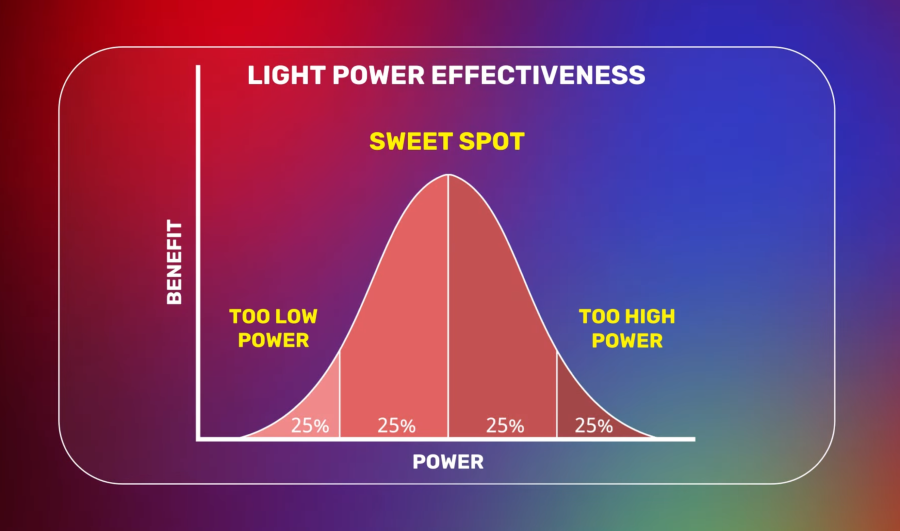
Less than that? You’re wasting your time. More than that? You might not see better results and could even experience irritation. But here’s the kicker—most companies don’t publish these numbers. And when they do, they’re often wildly inaccurate.
That’s why I test each mask personally using a $5,000 spectrometer and log all my data in a red light mask comparison tool. You can check out that tool if you want real, verified light measurements—it’s a game changer for making an informed decision.

2: Coverage—Is the Light Hitting Your Face?
You could have the perfect wavelength and intensity, but if the light isn’t reaching your skin evenly, it’s all for nothing.
When testing masks, I assess 10 facial zones: forehead, cheeks, temples, chin, jawline, nose, nose bridge, under the eyes, crow’s feet, and lips. A good mask will deliver consistent stimulation to all of these areas.
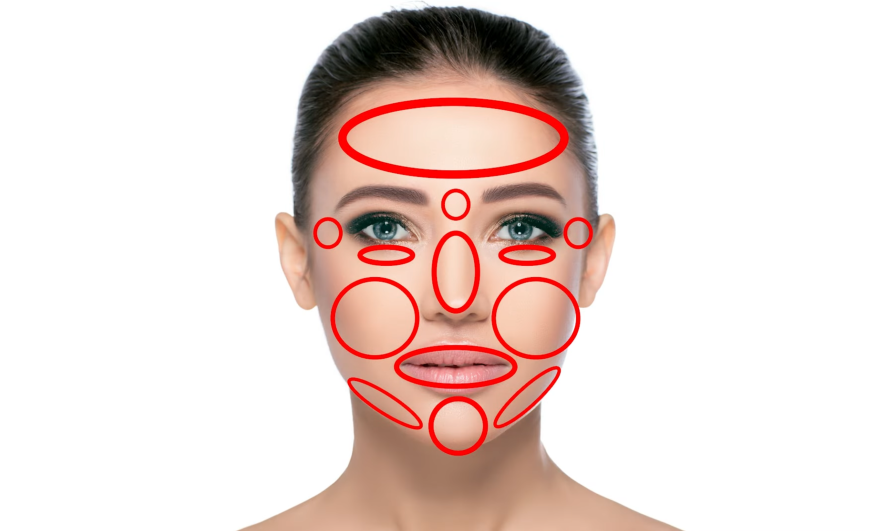
However, you may be surprised to learn how many masks fail this basic requirement. Some don’t cover your whole face. Others have so few LEDs that certain areas get little to no exposure.
Here’s what to look for:
- LED Count: More LEDs = better coverage. This is usually listed in the specs, or you can count them yourself by referring to the photos.
- LED Placement: Even spacing matters. LEDs clumped in one section won’t help your crow’s feet or jawline.
Also, every face is shaped differently. A mask might sit flat on one person’s skin but hover awkwardly over someone else’s nose. That’s why I always include fit notes in my reviews—and why user reviews or trying it yourself are so important.
3: Fit, Comfort & Ease of Use—You’ll Only Use It If It Feels Right
Even the most powerful mask won’t help if it’s uncomfortable to wear. If it pinches, slides around, makes you sweat, or takes forever to put on, you’ll stop using it.
A perfect mask should:
- Fit securely but not too tightly
- Be breathable so you can talk and function while wearing it
- Be simple to operate (ideally 1–2 buttons max)
- Have clear, easy-to-follow instructions
This is one area where photos don’t tell the whole story. What are your best options? Read in-depth reviews from people who’ve worn the mask, check out my detailed fit scores, or try it yourself. Ensure there’s a solid return policy in place in case it’s not the right fit.
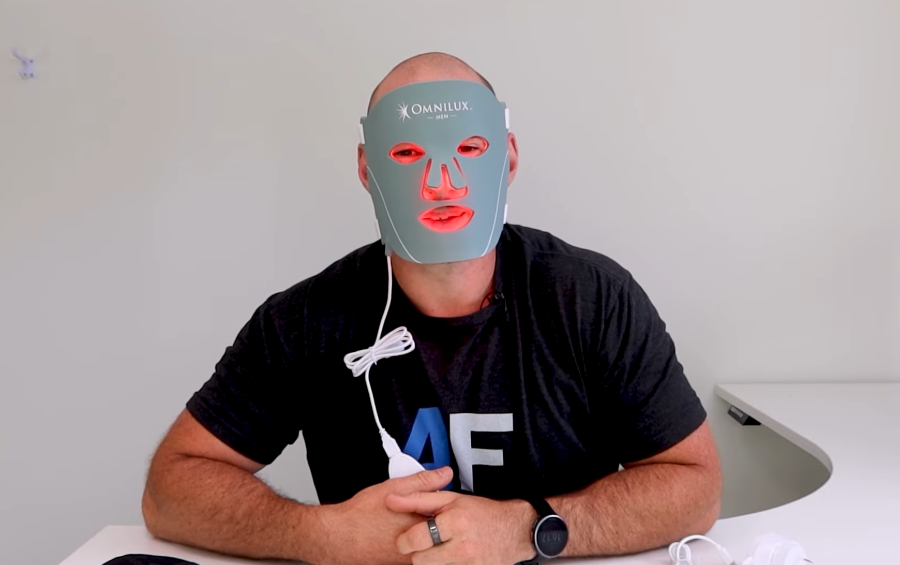
4: Price & Peace of Mind—Buy Smart, Buy Safe
Let’s face it—budget matters. You might find a mask that checks every box, but if it’s double your budget, it’s just not realistic.
Factor in not just the sticker price but also shipping, taxes, and return costs. Look for brands that:
- Are well-established
- Offer clear return policies
- Don’t bury you in fine print if something doesn’t work out
And if you're shopping through my links, I usually have discount codes available that can save you a good chunk of money. Check for those before buying.
Final Thoughts—The Non-Negotiables for Any Red Light Mask
Let’s wrap it up with what matters. If a mask doesn’t have:
- Therapeutic wavelengths (630–660 nm red and 800–850 nm near-infrared)
- Adequate power output (aim for 5–9 joules/cm²)
- Full face coverage with plenty of LEDs
- Comfortable fit and ease of use
- A reasonable price from a reputable brand
…then skip it.
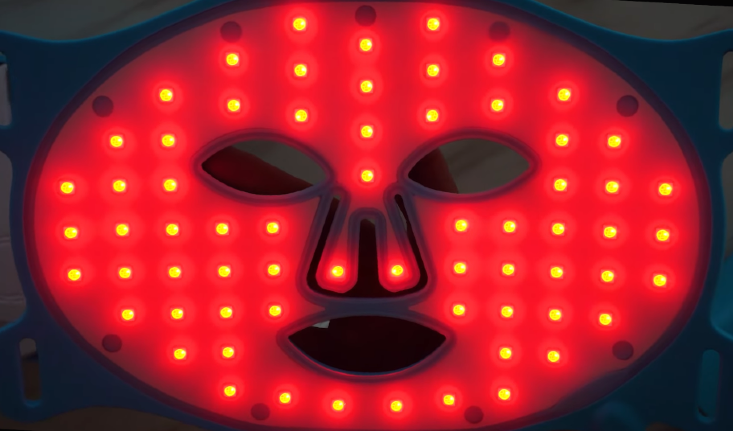
Be skeptical of gimmicky marketing claims, such as “NASA light,” “7 colors,” or even “FDA cleared” (which only indicates it's safe, not necessarily practical).
I have a huge showdown video in the works where I’m comparing all the top red light masks on the market, one by one, using these exact criteria. I’ll also be releasing individual reviews on each mask, so if you’re serious about finding the right one, make sure to check those out when they go live.
Until then, stick with the fundamentals. Focus on what’s proven to work. And don’t get distracted by marketing fluff. You deserve a mask that delivers real results, not empty promises.
Resources mentioned in my article:
👉 Grab my free buyer’s checklist: https://aferg.co/mask-hot
⭐ Sign up for my weekly newsletter
⭐ My video on Blue Light
⭐ Green light therapy benefits
⭐ Blue light therapy benefits
⭐ Amber light therapy benefits
Items Mentioned In This Article:
⭐ For the latest and best deals for light therapy: https://aferg.co/red-light-deals
⭐ AMIRO Spectra 5-in-1 Mask, Use code 70ALEX to save $70: https://aferg.co/amiro
⭐ Block Blue Light Face Mask, use this link to save 15% (discount is auto-applied) https://aferg.co/blockbluelight
⭐ CurrentBody LED Face Mask, use code ALEXFERGUS for 10% off site-wide https://aferg.co/currentbody-mask
⭐ Foreo FAQ202 Mask, no code – use this link: https://aferg.co/Foreo
⭐ Hooga Red Light Therapy Mask or any product, use the following link: https://aferg.co/hooga-rlt. 12% discount auto-applied at checkout
⭐ Infraredi LED Light Therapy Mask, code ALEX to save 10%: https://aferg.co/infraredi
⭐ JOVS 4D Red Light Mask, use code ALEX for 10% off: http://www.jovs.com
⭐ Kala Red Light Face Mask, click link for 15% off (auto-applied): https://aferg.co/Kala
⭐ Lumara Viso Mask, use code ALEX50 to save $50: https://aferg.co/lumara
⭐Maysama PRANA LED Mask, code ALEX for 10% off: https://aferg.co/maysama
⭐ Megelin Laser & LED Mask, use code ALEX for 5% off:
https://aferg.co/megelin
⭐ MitoRed Mitoclear LED Face Mask, discount code generated after you click the link: https://aferg.co/7d221
⭐ NanoLeaf LED Face Mask, use code ALEX15 for 15% off: https://aferg.co/nanoleaf
⭐ Omnilux LED Masks, click link for 10% off (auto-applied): https://omniluxled.com/ALEXFERGUS
⭐ Project E Beauty LED Face Masks, Use code ALEX15 for 15% off: https://aferg.co/projectebeauty
⭐ Qure Q-Rejuvalight Pro Mask, click link for 10% off (auto-applied): https://aferg.co/Qure
Found This Interesting? Look At These Articles:
🔴 Red Light Therapy For Melasma & Hyperpigmentation: Everything You Need To Know
🔴 Does Red Light Therapy Work For Eczema?
🔴 The Red Light Therapy Facial Fat Loss Link: Myth Or Reality?
🔴 Red Light Therapy And Its Potential For Diabetes
Consider These YouTube Videos As Well:
🔴 Do You Get Vitamin D From Red Light Therapy? Know THIS!
🔴 Can I Stop Using Red Light After This Sunset Test?!
🔴 I Tested 17 Red Light Panels: Here’s the BEST One (2025 Ultimate Comparison)
🔴 How To Use Red Light Therapy 101: Know THIS For Starters
Alex's Bio
Alex Fergus wrote this blog post. Alex is an ISSN Sports Nutrition Specialist, Fitness Professional, and certified Superhuman Coach who continues to expand his knowledge base and help people worldwide with their health and wellness. Alex is recognized as the National Record Holder in Powerlifting and Indoor Rowing and has earned the title of the Australian National Natural Bodybuilding Champion. Having worked as a health coach and personal trainer for over a decade, Alex now researches all things health and wellness and shares his findings on this blog.
